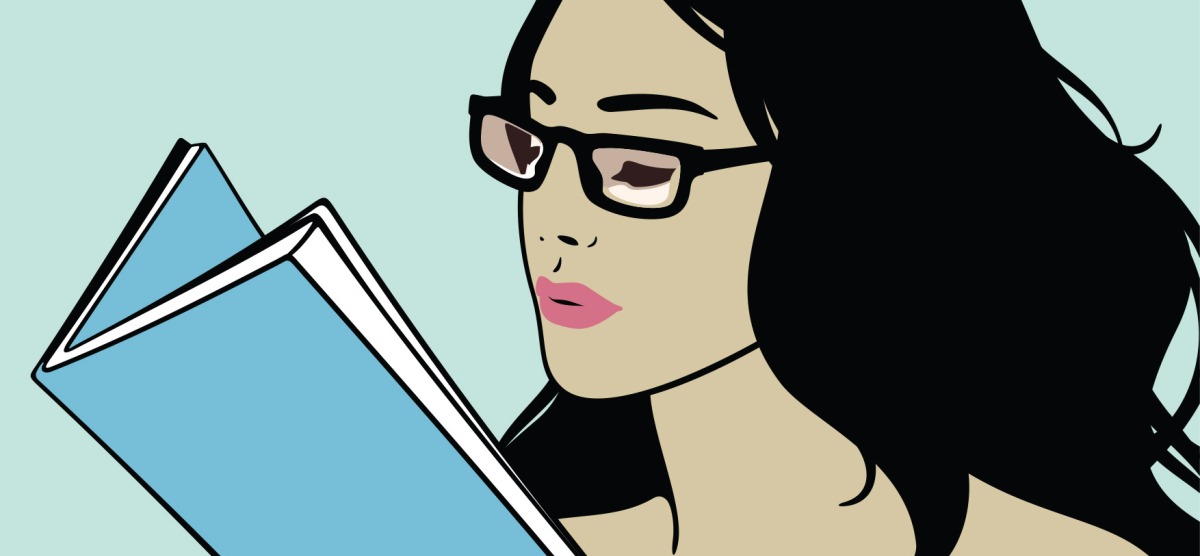
On Reading
For these Mawrters, autobiography begins with books.
“What books shaped you as a reader, as a thinker, as a writer?” I used to ask my Bryn Mawr students, to better understand their literary influences and aspirations. When I met Maralee LaBarge Poulsen ’99 during her first year, she was already creating the “personal syllabus” she rereads today. As she drafts a novel set in pre-Revolution Russia, Poulsen seeks strategies from work she admires: Lorrie Moore’s Anagrams for character development, Milan Kundera’s The Unbearable Lightness of Being for addressing social issues without being didactic. To infuse her realistic setting with folklore, she consults Ursula LeGuin, who “uses fantastic settings to deep dive into what is fundamentally human.”
Any biography of a Bryn Mawrter starts with her books.
An “insanely curious girl interested in story puzzles,” Nancy Kirk ’59 followed her namesake Nancy Drew to Agatha Christie, Ngaio Marsh, and P.D. James.
“I never read the children’s classics that everybody else at Bryn Mawr read,” she says. “But when I was 10 or so, my father came into the living room and found me reading Kafka’s The Trial.” —Nancy Kirk '59
Kirk culled a lifelong collection to a double bookshelf filled with favorites, including her father’s mysteries; her mother’s autographed first editions; Tolstoy’s War and Peace, which “took her away to Russia” in high school; French existentialists Camus and Sartre, de rigueur in college; the Strangers and Brothers series by scientist and novelist C.P. Snow; biographies of Sonia Sotomayor, Katharine Graham, and Michelle Obama. “Books were my escape, my way of being places I couldn’t get to in real life,” she says. She’s still armchair traveling with two alumnae book groups from the classes of 1955–1959 and the 1980s–90s.
The stories of our lives as readers often feature firsts: discoveries that change our perspective or our minds.
“I had so much assigned reading at Bryn Mawr––yet that’s when I was inspired to read for pleasure,” says Kavita Das ’96. “Outside the classroom, women from all over the world recommended books that weren’t on my high school World Literature syllabus. Isabelle Allende. Banana Yoshimoto. Jhumpa Lahiri. What a revelation! Now I’m a writer who centers the stories of people of color, especially women of color, in my own work.”
Paula Tuchman Weiss ’84 read Tocqueville’s Democracy in America at an “opportune moment” as she was becoming politically conservative. “Ronald Reagan was preaching a doctrine of American exceptionalism,” she recalls, and Tocqueville also saw this new country as exceptional. Though written about 1830s America, the book was prescient on many issues, says Weiss, including “race relations, the primacy of the U.S.– Russian rivalry, and how religion checks materialism in a democracy.” She rereads the book “like the Bible,” dipping into passages that reverberate today. “It reminds you that this American experiment has been going on for 200 years,” she says, “and enables you to rise above all the depressing ups and downs.”
“I’ve never read a children’s book that electrified me as much as Harriet the Spy,” says Gina Willner-Pardo ’79, who has published 18 books for children and currently writes short fiction for adults. “For a budding writer, it’s a roadmap.” Reading as a writer, Willner-Pardo distinguishes between the clever, humorous voice Louise Fitzhugh created for Harriet and an authorial voice like Alice Munro’s, which conveys the writer’s style and body of concerns. “[Munro] is the writer who most speaks to me,” she says. “She can make a world out of one small event. I can’t compare myself to her, but if I were stuck on a deserted island and could pick one book, it would be one of hers.”
For Luvon Roberson ’74, Watership Down is a touchstone she rereads in times of transition. She first discovered this saga, about a warren of rabbits compelled to find a new home, while staying in a friend’s apartment as she reconsidered plans for an academic career. Her dissertation topic––how Zora Neale Hurston aligned social science methodology with the imaginative process of creating narrative––had been rejected by the anthropology committee chair, who wanted her to write on teen pregnancy. “Hurston’s way of seamlessly weaving folklore and mythology held by oppressed people into her work is why—I can understand now—I was attracted to [this book by] Richard Adams,” says Roberson. “I picked it up again recently, maybe because I’m starting to claim myself as a writer. Watership Down helps put me back together again.”
At our alma mater, known for its readers, books are our best teachers.
Published on: 05/31/2019
